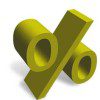The US Federal Reserve has been increasingly hinting that it would raise its policy rate at its next meeting, which is scheduled for December…[That being said,] however, the US central bank’s communications strategy has been sloppy, erratic and contradictory to say the least. That means to get a sense of where the Fed might go, it pays to take a closer look at some of the key underlying economic forces. Once you examine the finer details, it quickly becomes clear that there are 5 key reasons that the Fed is unlikely to raise rates anytime soon.
next meeting, which is scheduled for December…[That being said,] however, the US central bank’s communications strategy has been sloppy, erratic and contradictory to say the least. That means to get a sense of where the Fed might go, it pays to take a closer look at some of the key underlying economic forces. Once you examine the finer details, it quickly becomes clear that there are 5 key reasons that the Fed is unlikely to raise rates anytime soon.
A weak economy
Eight years after the start of the financial crisis and ensuing recession, the US economy struggles to achieve breakout speed. While US job creation supposedly surged by 271,000 last month, over the past three months that total looks less impressive. Furthermore, the jobs being created are of poor quality and labor force participation remains at near 30 year lows.
2. Inflation numbers continue to run below Fed targets
The Federal Reserve claims that any timing of future moves will be “data dependent,” and one of its key targets has been an inflation rate that runs at nearly two percent over the medium-term. However, the Fed is nowhere near that target even over the short-term. That’s important because inflation targets are at least as important as the more widely-followed employment numbers, to government and central bank planning models.
3. The Fed can’t risk blowing its credibility
The US economy is now in its seventh year of expansion, which means that the odds of it slipping into recession again increase every year. If the Fed raises rates in December, it risks accelerating the process, and would quickly find itself needing to reverse course. This would be a huge blow to the central bank’s credibility, which is a key pillar of the fiat money system.
4. US election next year
While the US central bank is nominally independent it is in fact a political body, as former Fed Chairman Alan Greenspan recently acknowledged. Any Fed moves would thus be interpreted in light of the upcoming November 2016 Presidential election. Central banks have traditionally avoided raising rates in an election year and, as such, December will represent one of Yellen’s last chances to influence events, without appearing blatantly political. As an Obama appointee, she will want a strong economy next year, and that implies she will want to keep interest rates low.
5. A balance sheet wind-down would be a better way to tighten
If the Fed really wanted to tighten up the economy, a better and more consistent way to do so, would be in reverse order to the way it loosened things. For that to occur, the Fed would need to start by unwinding its controversial Quantitative Easing asset purchases, which have bloated the Fed’s balance sheet to nearly $4.5 trillion. This would increase longer-term interest rates first, as opposed to short-term rates, which would be a far more prudent course, as it would steepen the yield curve and increase the incentive to invest for the long-term.
On the Other Hand
With all of these pressures and data points mitigating against a December rate hike, if the Federal Reserve does act, it will likely be due to developments that are not readily understood by the general public. Possibilities include fragility in the derivatives market, bond fund outflows, which hamper the financing of US debt, or other information which the Fed has access to but does not make public…
[The original post* by Peter Diekmeyer (sprottmoney.com) is presented here by the editorial team of munKNEE.com (Your Key to Making Money!) and the FREE Market Intelligence Report newsletter (see sample here – register here) in a slightly edited ([ ]) and/or abridged (…) format to provide a fast and easy read.]*https://www.sprottmoney.com/blog/five-reasons-the-fed-cant-raise-rates-peter-diekmeyer.html
Want more such articles? Just “follow the munKNEE” on Twitter; visit our Facebook page and “like” an article; or subscribe to our free newsletter – see sample here.
Related Articles from the munKNEE Vault:
-
The Fed’s Next Move – More Easing Or A Rate Increase?
I see no way the Fed can raise interest rates this year, I think the earliest rate increase is probably the end of 2016. I expect the Fed’s next step will be easing, not tightening – which of course is very bullish for gold!
2. Inside Scoop: Fed Rate To Increase By Infinitesimal Amount In December
Believe it or not, what follows is supposedly the transcript of a recent speech by the outspoken Gustavo Laframboise-Pierre, Global Director of Statistical Creation at the European Central Bank, to the Federal Reserve Bank of Kansas City’s “Economic Symposium”. It provides considerable inside insight into what is going to unfold regarding interest rates.
 munKNEE.com Your Key to Making Money
munKNEE.com Your Key to Making Money